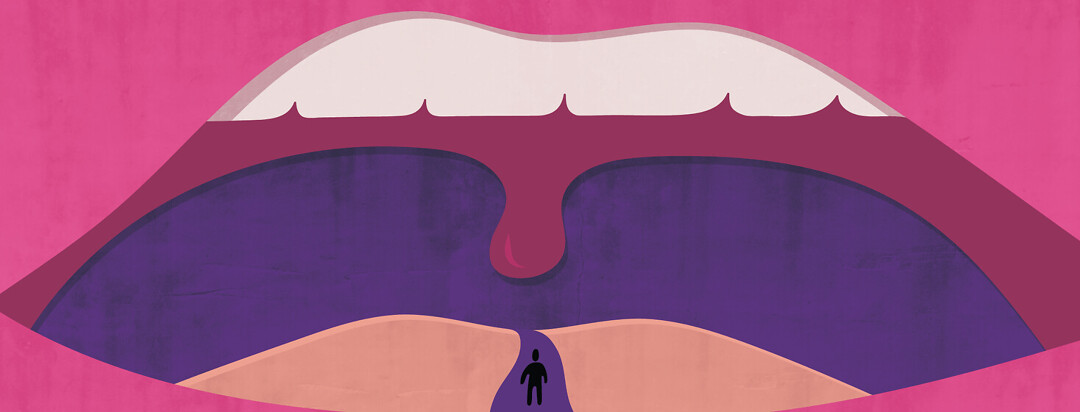Expanding Your Horizons
For most people, their route to sleep apnea diagnosis and treatment involves seeing a general practitioner (GP) or primary care physician (PCP) and being referred to a sleep specialist.
Indeed, this was the path my diagnosis of sleep apnea took. My sleep specialist diagnosed me with obstructive sleep apnea and prescribed a CPAP machine.
Unanswered sleep apnea questions
That was the end of my story until last year. I became more and more curious as to the root cause of my sleep apnea. When I thought back to my meeting with my sleep specialist, I remember asking what caused obstructive sleep apnea.
He didn’t answer that question; he moved on to the treatment option of the CPAP machine. The sleep specialist assured me that I would be feeling much better in no time.
Tonsils, tongue-ties, and thumbsucking
It always bothered me that I didn’t know the root cause of my sleep disorder. Last year, I started reading more deeply about sleep-disordered breathing and possible causes. Reading James Nestor’s book Breath helped me understand some of the underlying causes of sleep-disordered breathing.
I noticed that I had almost all of them, including large tonsils obstructing my airway as a child. This, together with a tongue-tie, thumbsucking, and mouth breathing could have been contributing factors to my sleep apnea.
Finding specialists to help me
I was introduced to a number of dentists specializing in treating sleep apnea with mandibular advancement devices. This made me curious about other medical and healthcare professions which might have a bearing on sleep apnea.
After discovering myofunctional therapy, I found a therapist near me and started working with her weekly on my tongue posture and strength. I went to a specialist dentist to have my tongue-tie released. Both of these things improved my nasal breathing, which, in turn, improved my nighttime sleep.
Of course, I am still using my CPAP but switching from mouth breathing to nasal breathing really improved how I felt, especially in reducing my anxiety.
Researching epigenetic orthodontics
I had read extensively about the concept of “epigenetic orthodontics,” which is highly controversial. The idea is that orthodontic devices can be used to expand the palate. A knock-on effect of widening the palate can be improvements to the airway since the roof of the mouth is the floor of the nose.
I talked to multiple highly credentialed orthodontists, who all advised me against this course of treatment. They either thought palate expansion wasn’t possible in adults or thought these devices mainly tipped teeth rather than achieving the true expansion and bone growth they claimed.
Listening to personal treatment experiences
Most doctors and orthodontists argue that there isn’t yet enough scientific data to back the claims that expansion appliances are an effective treatment for sleep apnea. However, I found the personal stories of people successfully undergoing this treatment too compelling to ignore.
I found a highly credentialed dentist in my area who had trained to offer expansion appliances from a company called Vivos. It was lucky that I already had a trusted relationship with this dentist because she worked on my husband’s dental implants a few years ago. She is so convinced that these appliances offer results that she is treating herself and her own children with the system.
Slow going progress
I’m now 4 months into treatment. For the first 3 months, I wore only the upper DNA appliance and now I have completed the 4th month with upper and lower DNA appliances. This looks like a regular palate expander aside from a Y-shaped gap and some funny-looking loopy wires at the front.
I have been wearing these appliances for 16 hours a day, 7 days a week, and am slowly expanding them by turning a key every third day. So far, I have expanded my upper palate by 4mm. That’s pretty slow going, but I have noticed improvements to my airway. Nasal breathing is easier and my sinuses seem to be draining properly.
Tracking my sleep quality
Sleep quality is another thing I am tracking both with the AHI readout from my CPAP and the stages of sleep tracked by my Oura ring. So far, the improvements are slight. I am now tracking some deep sleep stages where before there were none and my REM sleep seems improved if my increased dreaming is anything to go by.
Hopefully, when my treatment is complete – my dentist estimates it will take 18 to 24 months in total – I will have improved my airway to the point that I don’t need to use my CPAP anymore. For now, I am trying to remain patient and optimistic about my unusual treatment choice.
Do you have any questions for Emma? Have you explored other treatment options too? Tell us more in the comments below!

Join the conversation